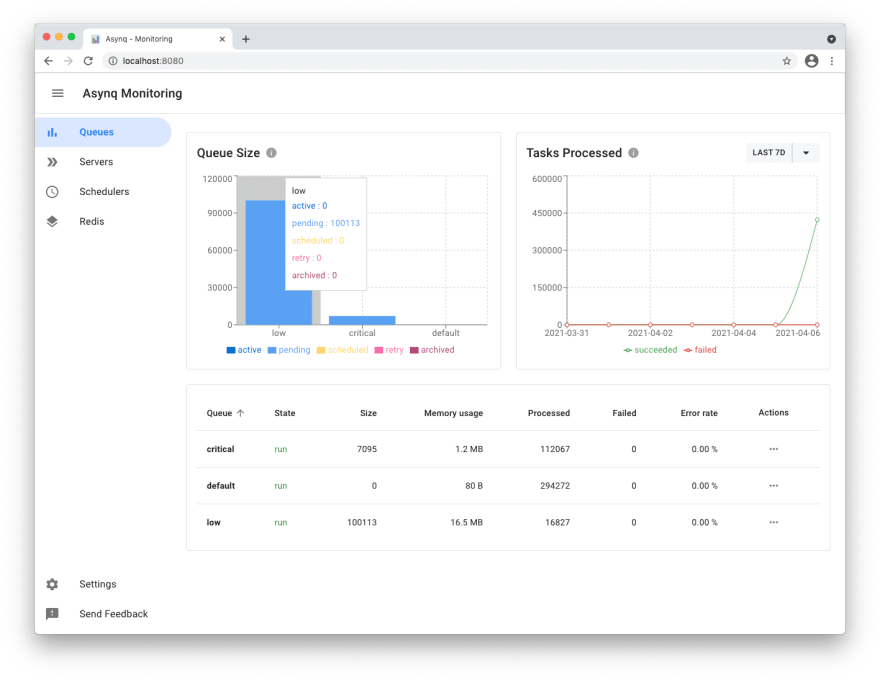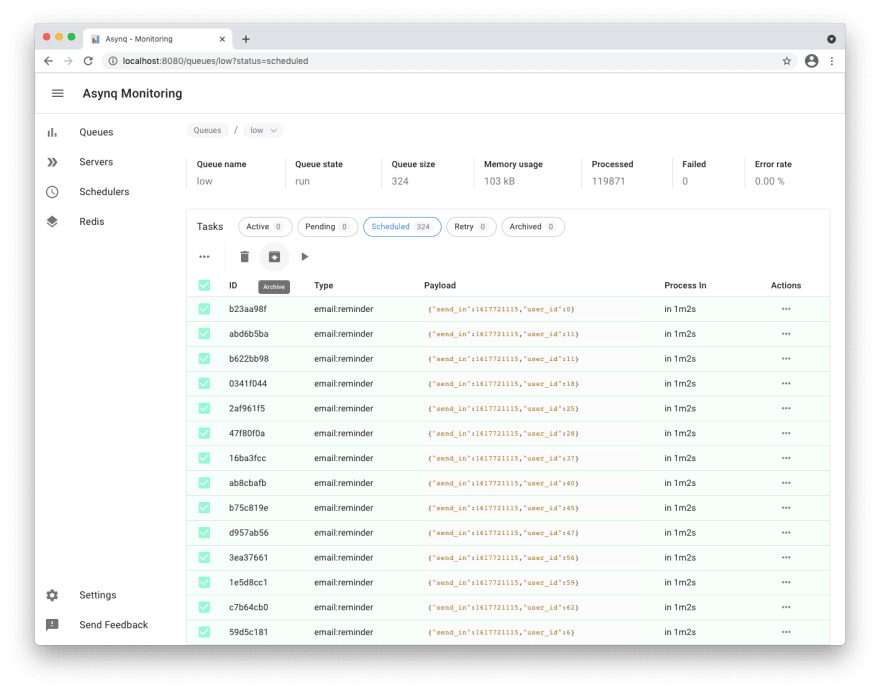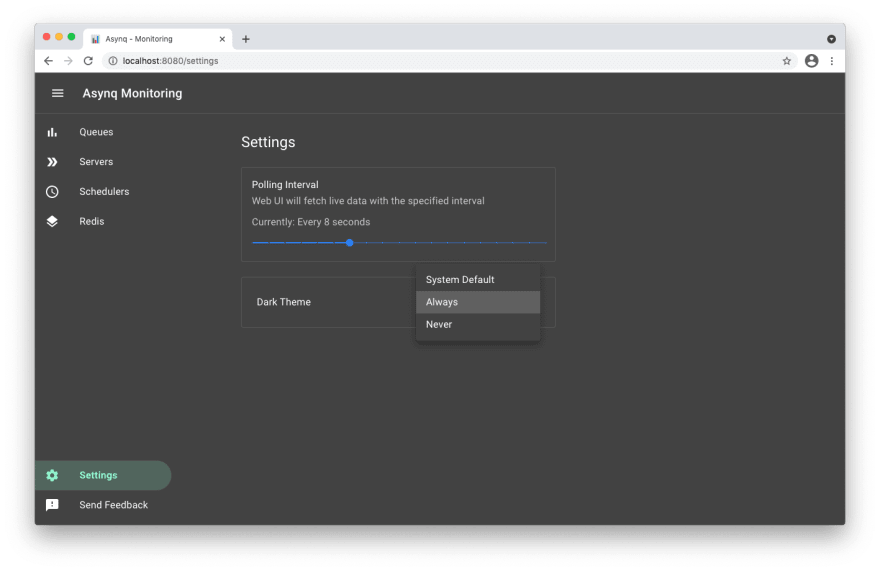
A modern web based tool for monitoring & administrating Asynq queues, tasks and message broker
Version Compatibility
| Asynq version | WebUI (asynqmon) version |
|---|---|
| 0.18.x | 0.2.x |
| 0.16.x, 0.17.x | 0.1.x |
Install
Release binaries
You can download the release binary for your system from the releases page.
Docker image
To pull the Docker image:
# Pull the latest image
docker pull hibiken/asynqmon
# Or specify the image by tag
docker pull hibiken/asynqmon[:tag]
Building from source
To build Asynqmon from source code, make sure you have Go installed (download). Version 1.16 or higher is required. You also need Node.js and Yarn installed in order to build the frontend assets.
Download the source code of this repository and then run:
make build
The asynqmon binary should be created in the current directory.
Building Docker image locally
To build Docker image locally, run:
make docker
Importing into projects
You can import asynqmon into other projects and create a single binary to serve other components of asynq and asynqmon from a single binary.
Example
staticContentscan be embedded by using the pre-built UI bundle from the Releases section.
package main
import (
"embed"
"log"
"net/http"
"github.com/gorilla/mux"
"github.com/hibiken/asynq"
"github.com/hibiken/asynqmon"
)
//go:embed ui-assets/*
var staticContents embed.FS
func main() {
h := asynqmon.New(asynqmon.Options{
RedisConnOpt: asynq.RedisClientOpt{Addr: ":6379"},
})
defer h.Close()
r := mux.NewRouter()
r.PathPrefix("/api").Handler(h)
// Add static content handler or other handlers
// r.PathPrefix("/").Handler( /* &staticContentHandler{staticContents} */ )
srv := &http.Server{
Handler: r,
Addr: ":8080",
}
log.Fatal(srv.ListenAndServe())
}
Run
To use the defaults, simply run and open http://localhost:8080.
# with a local binary
./asynqmon
# with docker
docker run --rm \
--name asynqmon \
-p 8080:8080 \
hibiken/asynqmon
By default, Asynqmon web server listens on port 8080 and connects to a Redis server running on 127.0.0.1:6379.
To see all available flags, run:
# with a local binary
./asynqmon --help
# with Docker
docker run hibiken/asynqmon --help
Here's the available flags:
Note: Use --redis-url to specify address, db-number, and password with one flag value; Alternatively, use --redis-addr, --redis-db, and --redis-password to specify each value.
| Flag | Description | Default |
|---|---|---|
--port(int) |
port number to use for web ui server | 8080 |
---redis-url(string) |
URL to redis server | "" |
--redis-addr(string) |
address of redis server to connect to | "127.0.0.1:6379" |
--redis-db(int) |
redis database number | 0 |
--redis-password(string) |
password to use when connecting to redis server | "" |
--redis-cluster-nodes(string) |
comma separated list of host:port addresses of cluster nodes | "" |
--redis-tls(string) |
server name for TLS validation used when connecting to redis server | "" |
--redis-insecure-tls(bool) |
disable TLS certificate host checks | false |
Examples
# with a local binary; custom port and connect to redis server at localhost:6380
./asynqmon --port=3000 --redis-addr=localhost:6380
# with Docker (connect to a Redis server running on the host machine)
docker run --rm \
--name asynqmon \
-p 3000:3000 \
hibiken/asynqmon --port=3000 --redis-addr=host.docker.internal:6380
# with Docker (connect to a Redis server running in the Docker container)
docker run --rm \
--name asynqmon \
--network dev-network \
-p 8080:8080 \
hibiken/asynqmon --redis-addr=dev-redis:6379
Next, go to localhost:8080 and see Asynqmon dashboard:
Tasks view
Settings and adaptive dark mode
License
Copyright (c) 2019-present Ken Hibino and Contributors. Asynqmon is free and open-source software licensed under the MIT License. Official logo was created by Vic Shóstak and distributed under Creative Commons license (CC0 1.0 Universal).


